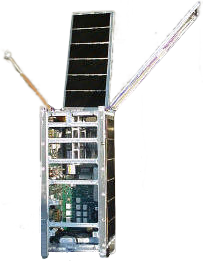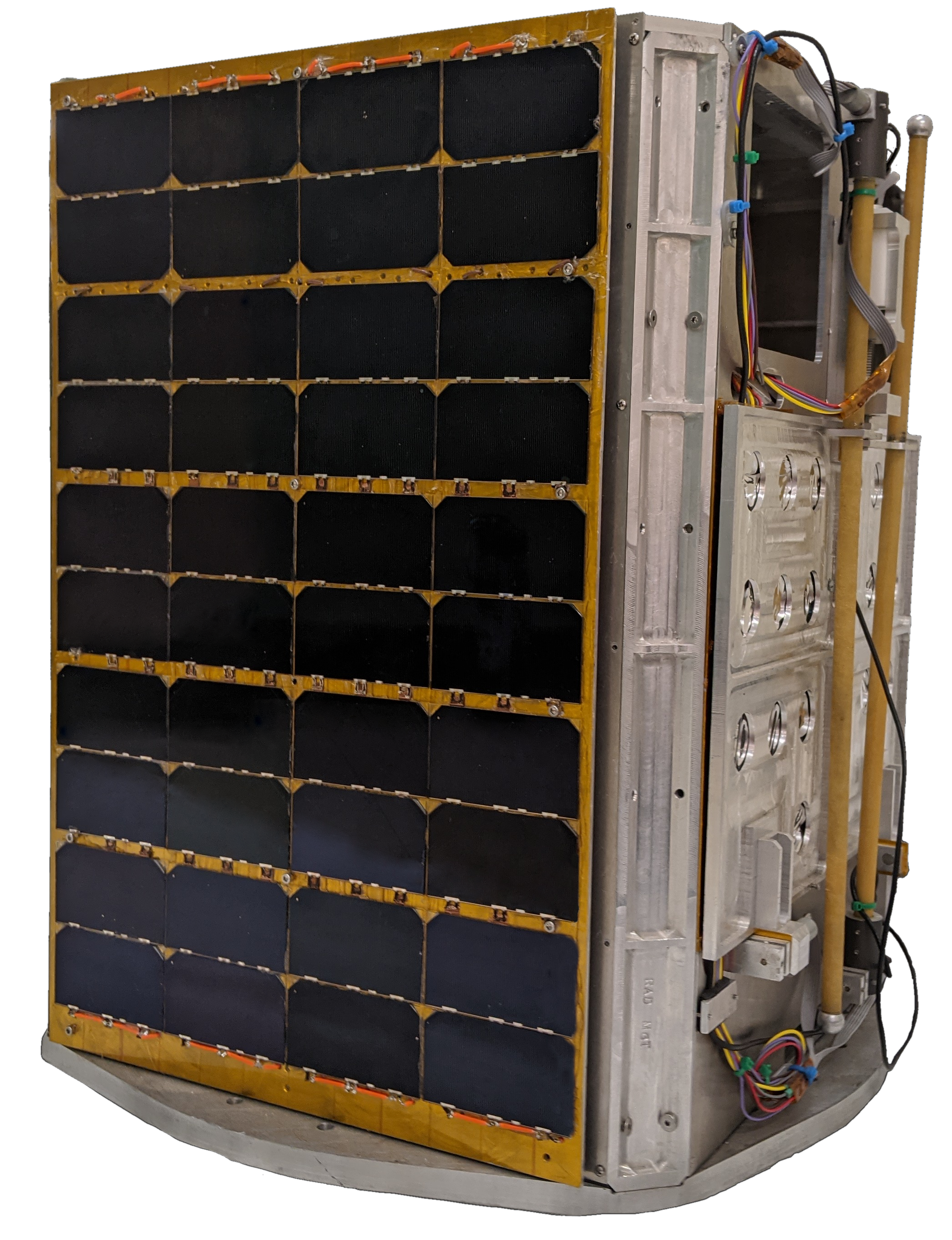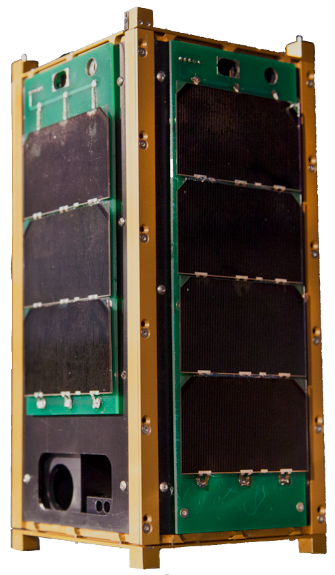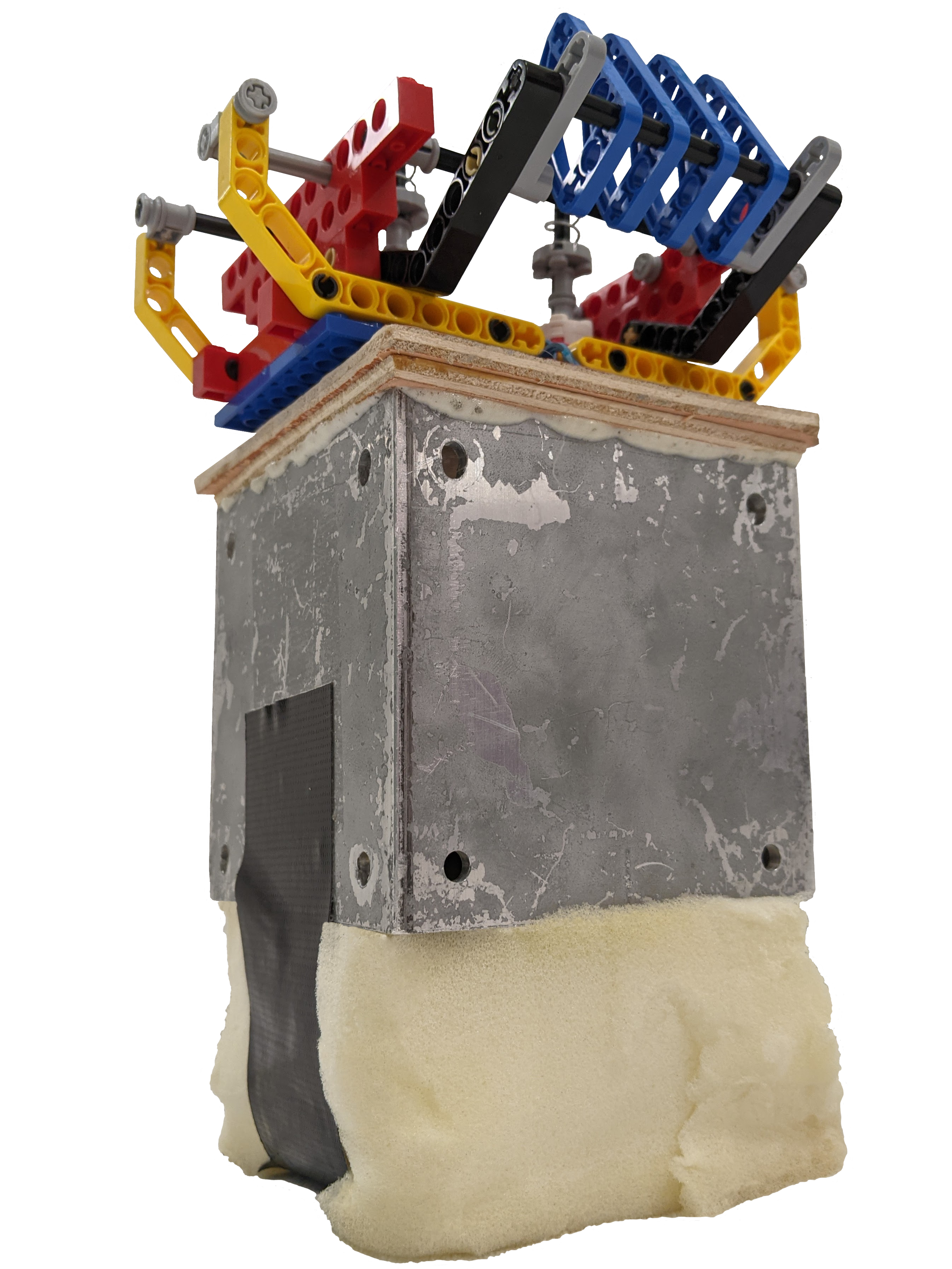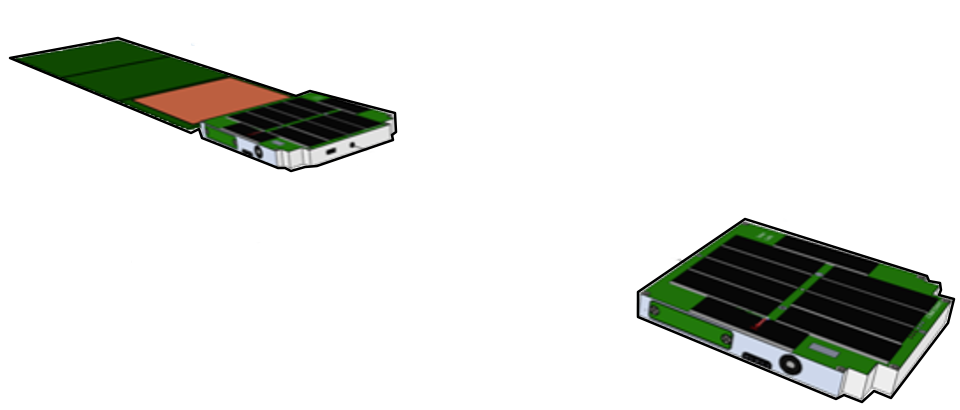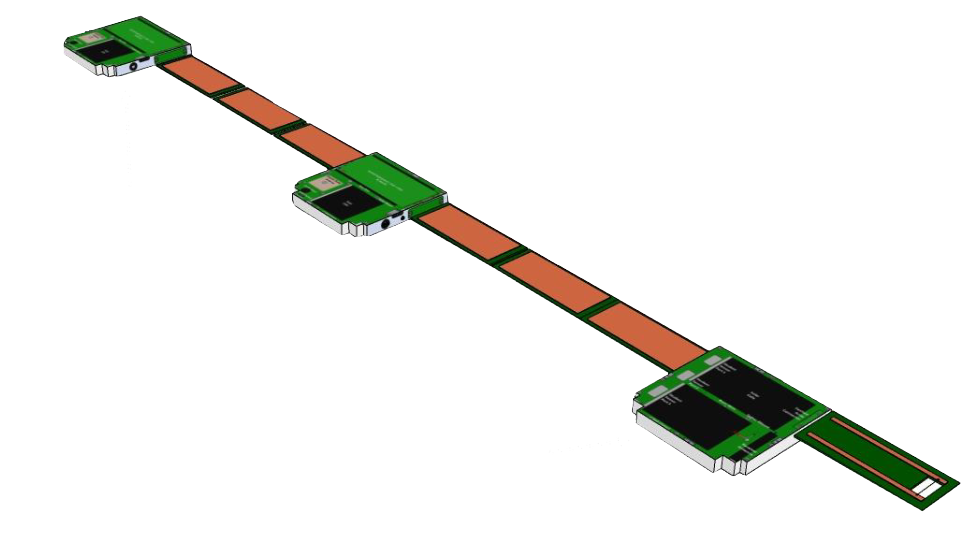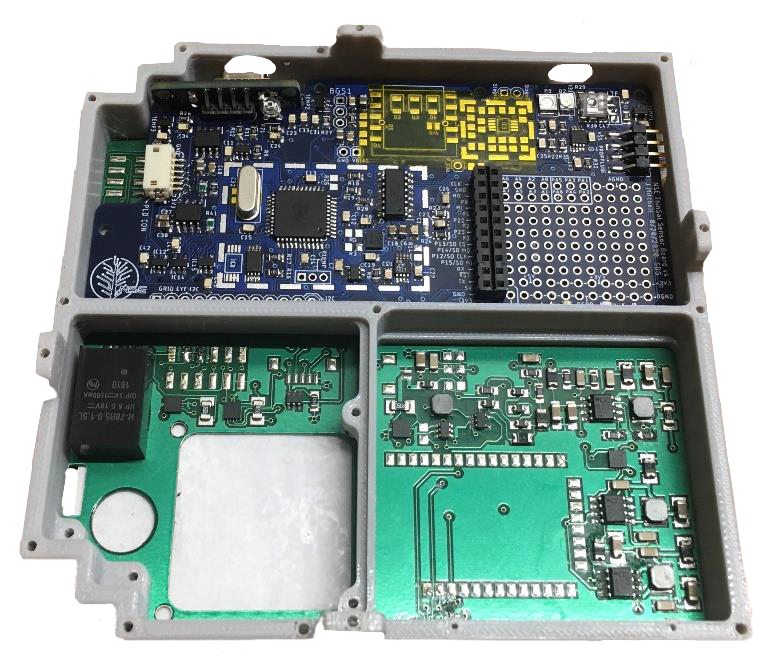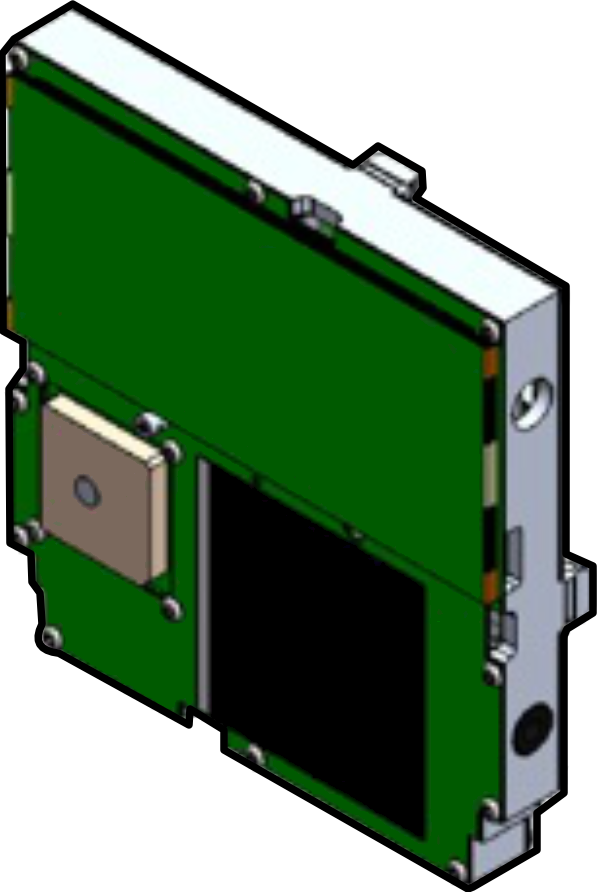Taylor Satellite and Space Program
ThinSat-B
Launched February 20, 2021
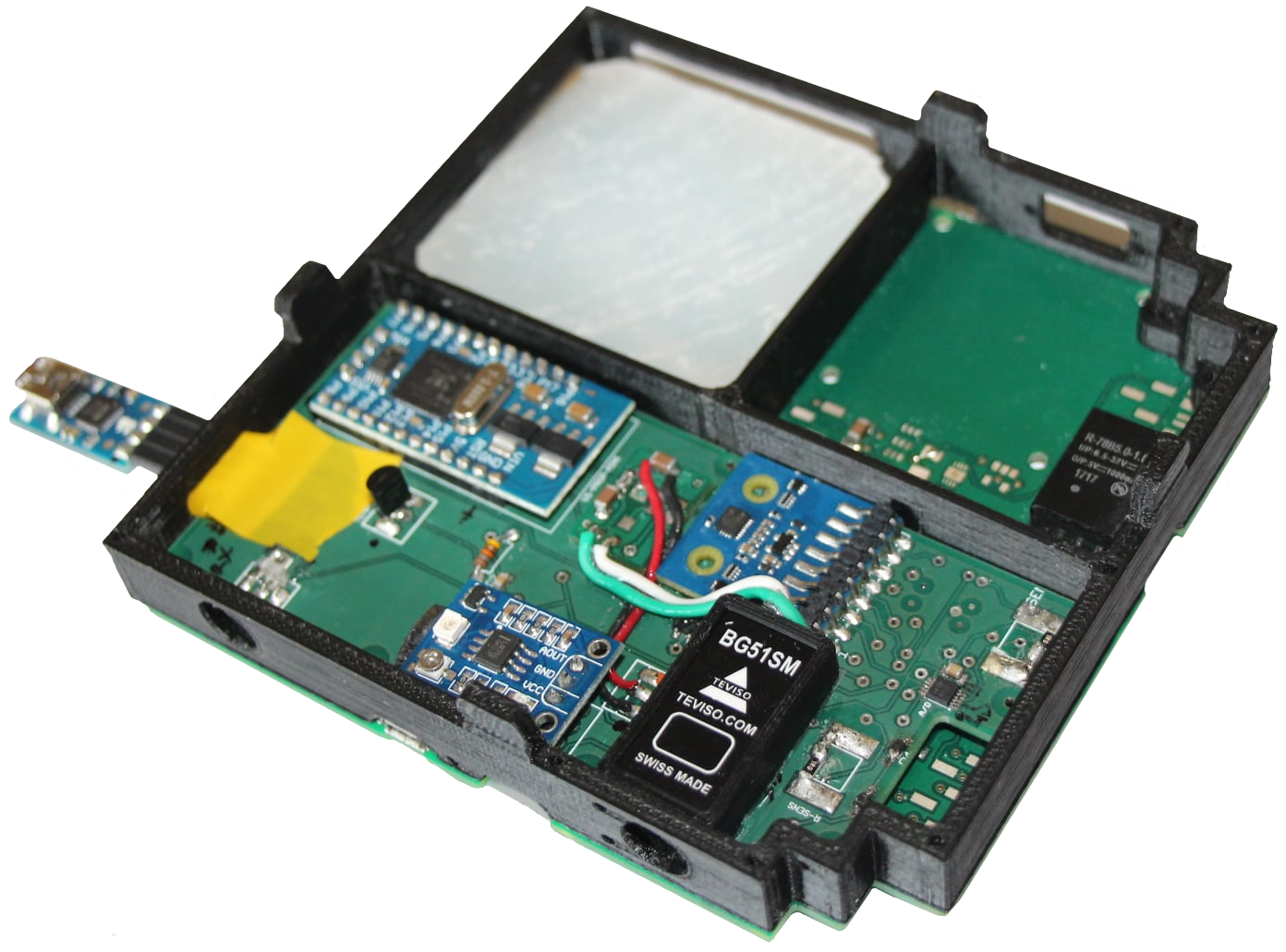
Taylor ThinSat-B, also called Sat6 or Sat8, was the university’s second-launched ThinSat and the first satellite to use the Parallax Propellor 8-core microprocessor in space. It recorded atmospheric conditions such as
temperature, magnetic forces, and UV light levels, as well as the orbital conditions of the satellite itself (acceleration, rotations per minute, etc). One of its specific goals was to learn more about the impact of gamma
rays from the sun hitting the satellite, a phenomenon known to alter the digital data it stores.
The development process began on campus early in February of 2020 but took an unexpected turn when the COVID-19 pandemic required the university to move all operations online in mid-March. The unfamiliar situation did not
prove enough to stop the development team’s determination, however, as students continued working remotely, with faculty on-campus integrating their work into the mainframe provided by NearSpace Launch. Within three months
of the project’s start, the team had produced a working satellite, and they later delivered it to Virginia Space. Taylor ThinSat-B was launched along with 29 other ThinSats on the NG-15 Cygnus spacecraft and Antares rocket
the S.S. Katherine Johnson from the NASA Wallops Flight Facility in Virginia on Feb. 20, 2021.
Faculty mentors: Stefan Brandle, Rob Cartwright, Steve Dalcher
Read More

Click one of our satellites to learn more!

Want In?
With students from all backgrounds contributing to our satellite builds, you could be part of the next Taylor team to send your work into space! Check out our ABET-accredited Engineering and Computer Engineering majors or contact us for more info on how to get involved.
Copyright 2021 Taylor University Computer Science and Engineering
Built off of a template by Bootstrapious.


